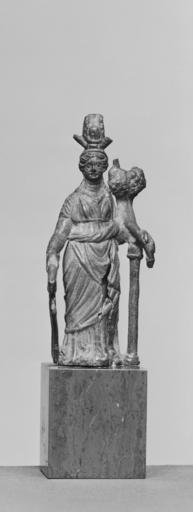MAKE A MEME
View Large Image

| View Original: | Egyptian_-_Isis-Fortuna_-_Walters_54943_-_Group.jpg (680x1800) | |||
| Download: | Original | Medium | Small | Thumb |
| Courtesy of: | commons.wikimedia.org | More Like This | ||
| Keywords: Egyptian - Isis-Fortuna - Walters 54943 - Group.jpg From the second half of the first millennium BC the goddess Isis became more and more popular outside Egypt Particularly during the Roman period she was worshipped as a goddess who unites all other goddesses in herself In the Ptolemaic period Isis received Hellenistic iconography in addition to her Egyptian iconography She was the only Egyptian goddess to receive such a second outfit The reason most likely was her increasing popularity in the Hellenistic and Roman world This statuette of Isis displays her in a Hellenistic robe She has a combination of cow horns sun-disk and ears of corn as a crown on her head a cornucopia in her left arm and a ship's rudder in her right hand The cornucopia connects her to the goddess Fortuna and the ears of corn to Demeter The rudder stresses the aspect of Isis as patron of navigation called Isis Pelagia However the most important attribute is the cornucopia which because of its size needed an additional support in the form of an extra pillar below the elbow of the goddess century 1 2 Roman bronze H cm 10 6 accession number 54 943 6611 Giovanni Dattari Sale Paris 1912 cat p 48 no 414 Henry Walters city Baltimore Walters Art Museum Henry Walters Acquired by Henry Walters 1912 Serapis The Creation of a God The Walters Art Museum Baltimore 2002 place of origin Egypt Walters Art Museum license Ancient Roman sculptures in the Walters Art Museum Ancient Egyptian statuettes in the Walters Art Museum Isis in Roman art Etruscan bronzes in the United States | ||||